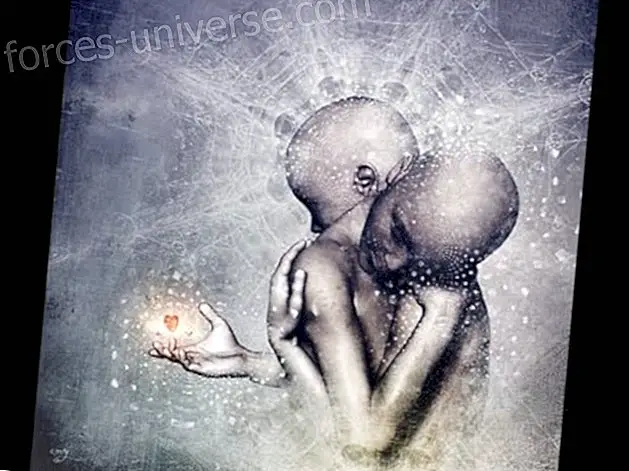The Lost Kingdom of Agharti or our memories of the Underground World. Part 1
- 2017

The legend of Agharti refers to the belief in an underground kingdom, a legendary kingdom located underground, linked to the far corners of the Earth through a network of tunnels . This myth, related to the " Hollow Earth " theory can be traced back to antiquity. In fact, we found mention of Agharti in the oldest traditions, and references in ancient manuscripts belonging to the first civilizations.
Most of these stories speak of Agharti being inhabited by a people who settled there long before the dawn of known history: a peace-loving race, interested in the purity of their lives, and who exerts a moderating influence over the towns that live on the earth's surface. Although in these times, the influence of this wise people in modern man, would become merely symbolic.
References to the Legendary Kingdom

We can discover the firmness with which Agharti's idea is rooted in classics such as the book of Louis Pauwels and Jacques Bergier " The Morning of the Magicians ":
“ The oldest religious texts speak of separate worlds located under the earth's crust that are supposed to be the place inhabited by the spirits that left. When Gilgamesh, the legendary hero of the ancient Sumerian and Babylonian epic, went to visit his ancestor Untapishtim, descended into the interior of the Earth; and it was there that Orpheus went to look for the soul of Eurydice. Ulysses, having reached the furthest limits of the western world, offered a sacrifice for the spirits of the ancients to rise from the depths of the Earth and give him advice. It is said that Pluto reigns in the underworld and over the spirit of the dead. Primitive Christians used to meet in the catacombs, and believed that the souls of the damned were going to live in caverns under the Earth. ”
To give another example, we just have to quote Sabine Baring-Gould, who said:
“ Wonderful caves and entrances to a mysterious underworld are common in many countries. The German stories about the mountain of Venus, in which is the body of Tannhäuser, or Federico Barbarroja in the Unterberg, or the Welsh stories of King Arthur in the heart of the mountain, or the Danish fables of Holger Dansk in the basements under the Kronenburg, they all refer to the generally widespread belief of a subworld inhabited by spirits. ”
On the other hand, archaeologist Harold Bayley, in his fascinating book "Archaic England, 1919", has advanced the subject by pointing out that it is assumed that many of our legendary heroes had actually come from the underworld. In this way he writes:
“ Virtually all the powerful children of mythology are represented as arising from the caves or the underground world: Jupiter or Chi was born in a cave and was venerated in a cave; it was said that Dionysus had been fed in another; Hermes was born in the mouth of a cave, and it is remarkable that, when a cave continues to be presented as the birthplace of Jesus Christ in Bethlehem, St. Jerome complained that in his time the heathen would celebrate the cults of Thammuz or Adonis in that same cave. "
The Thousand Names of Agharti

In short, both etymology and mythology indicate the probability, if not certainty, that among the ancients a cave, natural or artificial, was considered as the symbol, and to some extent facsimile, of the intricate uterus of creation or of Mother Nature " Man in his primitive state, " says Anthropology, " considers that he has emerged from some cave; in fact, from the bowels of the Earth. Almost all creation myths consider that man has emanated from the interior of the great earthly mother ”.
Following Professor Henrique Jose de Suza, in his fascinating article entitled: “ Does Shangri-La exist? ”, We can affirm the following:
In all the races of humanity, going back until the dawn of time, there was a tradition concerning the existence of a sacred land or an earthly paradise, where the highest ideals of humanity were living realities. We find this concept in the oldest writings and traditions in the peoples of Europe, Asia Minor, China, India, Egypt and America. It was said that this sacred land could only be known by people who really deserved it, pure and innocent, for which reason it is the central theme of childhood dreams. .
In ancient Greece, in the mysteries of Delphi and Eleusis, this heavenly earth was called M onte Ol i mpo and Campos El seos . Also in the early Vedic times he received various names, such as Ratnasaru (Top of the Gemstone), Hermadri (Golden Mountain) and M or nte Neru (Home of the Gods) and Olympus of the Hind es . Symbolically, the top of this sacred mountain is Heaven, its central part is on Earth and its base in the Underground World .
The Scandinavian eddas also mention this celestial city, which was the underground Land of Asar of the peoples of Mesopotamia ; it was the Land of Amenti from the Sacred Book of the Dead of the ancient Egyptians ; it was the City of the Seven Petals of Vishn , or the City of the Seven Kings of Edom, or the Eden of the Jewish tradition . In other words, it was the Terrestrial Paradise .
In all of Asia Minor, not only in the past, but also today, there is a belief in the existence of a wonder city full of wonders, known as Shamballah, where the Temple of the Gods is . He is also the Erdemi of the Tibetans and the Mongols .
The Persians called it Alberdi or Aryana, T ierra of their Atepasados, the Hebrews Cana n and the Mexicans Tula or Tul n, while the Aztecs called it Maya-Pan . The Spanish conquerors who arrived in America believed in the existence of such a city and organized many expeditions to find it, calling it El Dorado, or City of Gold . They probably knew about it from the aborigines, who gave it the name of Manca or City whose king wears gold clothes .
The Celts knew this sacred land with the name of Land of Mysteries, Dust or Dunanda . A chi n tradition speaks about the Land of Chivin or City of a dozen snakes . It is the underground world, which is in the roots of heaven. It is the land of the decal, calcis or kalki, the famous C lquida that the Argonauts were looking for when they left after the Golden Fleece .
In the Middle Ages it was called the Island of Aval n, where the knights of the round table set out to look for the Holy Grail, a symbol of obedience, justice and immortality . When King Arthur was seriously injured in a battle, he asked his companion Bediverer to leave in a boat to the limits of the earth with the following words: “ Goodbye my friend and companion Bedivere, I go to the land where it never rains, where there is no disease and where nobody dies . ” This is the Land of Immortality or Agharti, the underground world. This land is the Valhalla of the Norse, Mount Salvat of the Knights of the Holy Grail, the Utopia of Thomas More, the City of the Sun of Campanella, the Shangri-La of the Tibetans and the Agharti of the Buddhist world .
As the history of humanity progresses, we find less general and more specific reports on this widespread belief in a wonderful underground world.
We will continue to deepen the myth in successive articles.
SOURCE; "The Lost World of Agharti" by Alec McClellan






